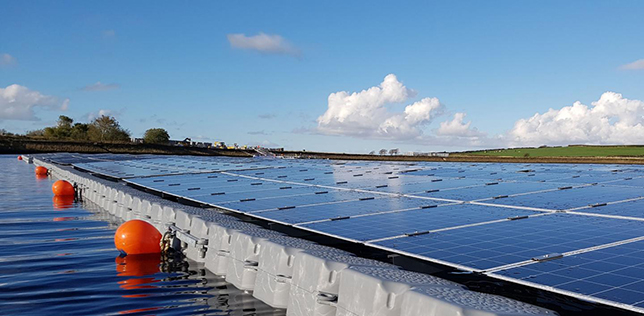University Researchers Model Effects of Floating Solar Farms
Solar panel arrays that cover canals and other waterways—also known as floating solar farms—have become an increasingly intriguing possibility as sustainable energy practices gain momentum. Trying to build conventional solar farms can prove controversial because the arrays cover vast areas of land. Constructing them on water, then, is a way to take advantage of space that would otherwise likely go unused.
Researchers from the University of Stirling in Stirling, Scotland, and Lancaster University in Lancashire, England, have finished the first detailed model of floating solar installations’ environmental effects on the bodies of water they cover.

Floating solar farms could help to protect lakes and reservoirs from some of the harms of climate change, a new study suggests. However, given the complex nature of water bodies and differing designs of solar technologies, there could also be detrimental ecosystem impacts of deploying floating solar arrays.
Photo Credit: Giles Exley
“As demand for land increases, water bodies are increasingly being targeted for renewable energy,” said Giles Exley, lead author of the study and a PhD researcher from Lancaster University. “Deployment of solar on water increases electricity production, but it is critical to know if there will be any positive or negative environmental consequences,” he said.
Results of the study indicate that floating solar farms have a positive impact on the surrounding areas. By covering the water’s surface, they help cool the water temperature, reducing the potential for evaporation and the growth of toxic algae. It can also reduce what researchers call the “stratification” of water—when the sun’s heat creates distinct layers of water of different temperatures. Water at the bottom layer can lose oxygen, which can reduce quality in supplies of drinking water.
In a similar study, researchers at the University of California, Santa Cruz and the University of California, Merced studied the potential effects of covering the state’s 6,350 km of canals with solar arrays. They concluded that the arrays would save about 40,000 cubic meters of water (roughly equal to 16 Olympic swimming pools) per kilometer of canal from evaporation every year. They also discovered a slight performance increase in the solar arrays due to a cooler microclimate above the water’s surface.
According to the British scientific journal Nature, “the benefits outweigh the costs of having to build the panels over the canals, the team concludes.”
About the Author
Matt Jones is senior editor of Spaces4Learning. He can be reached at mjones@1105media.com.